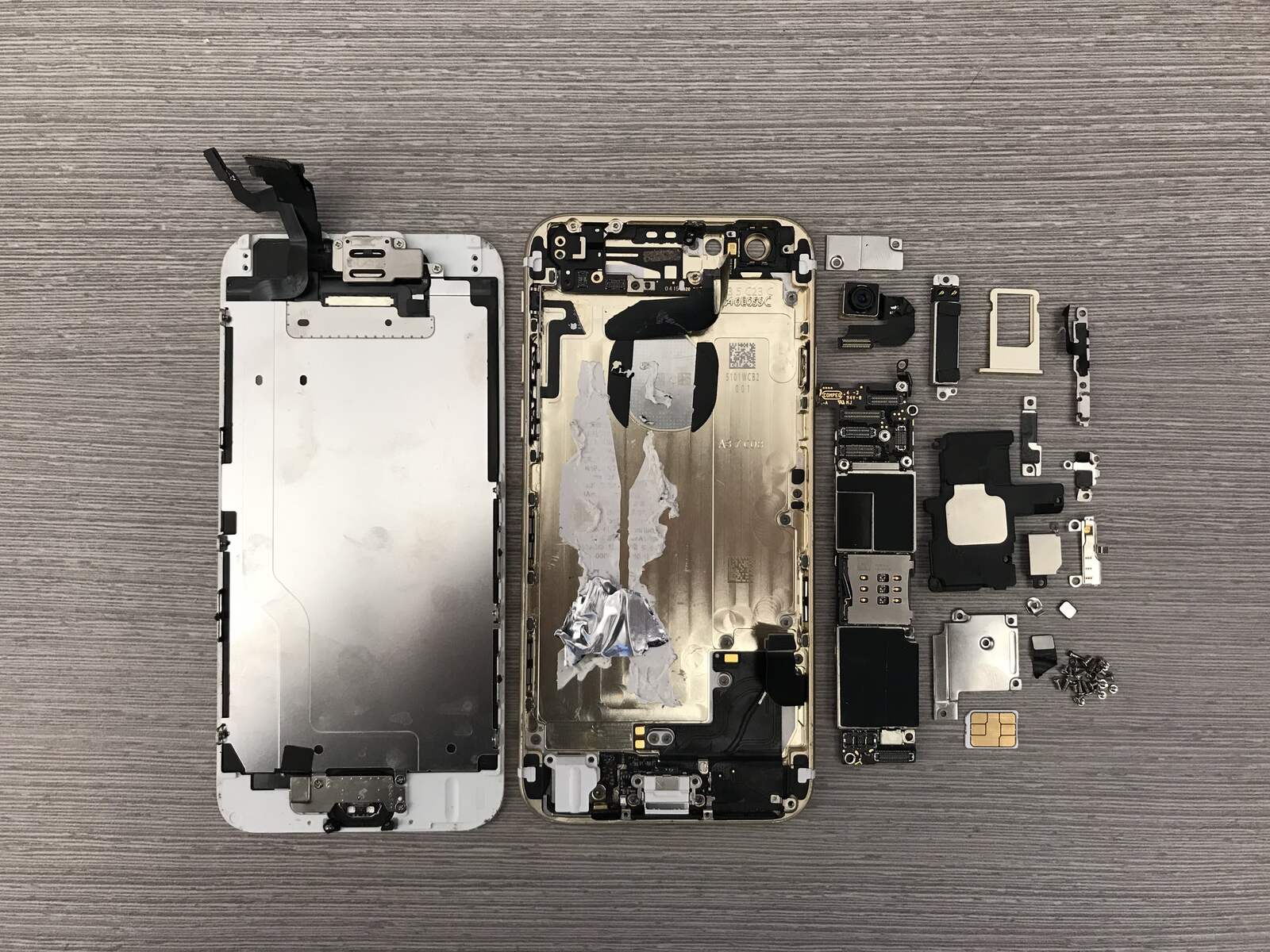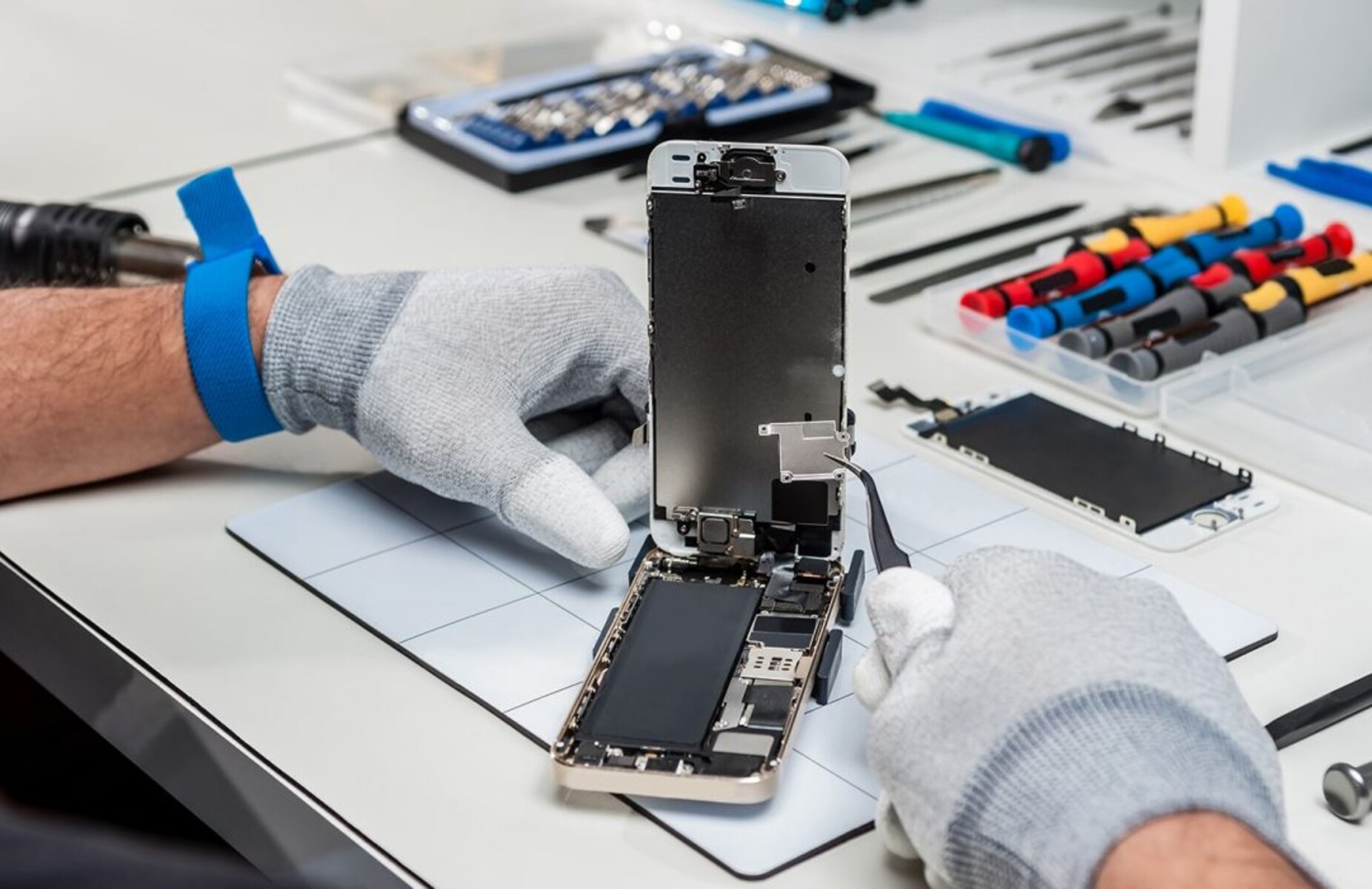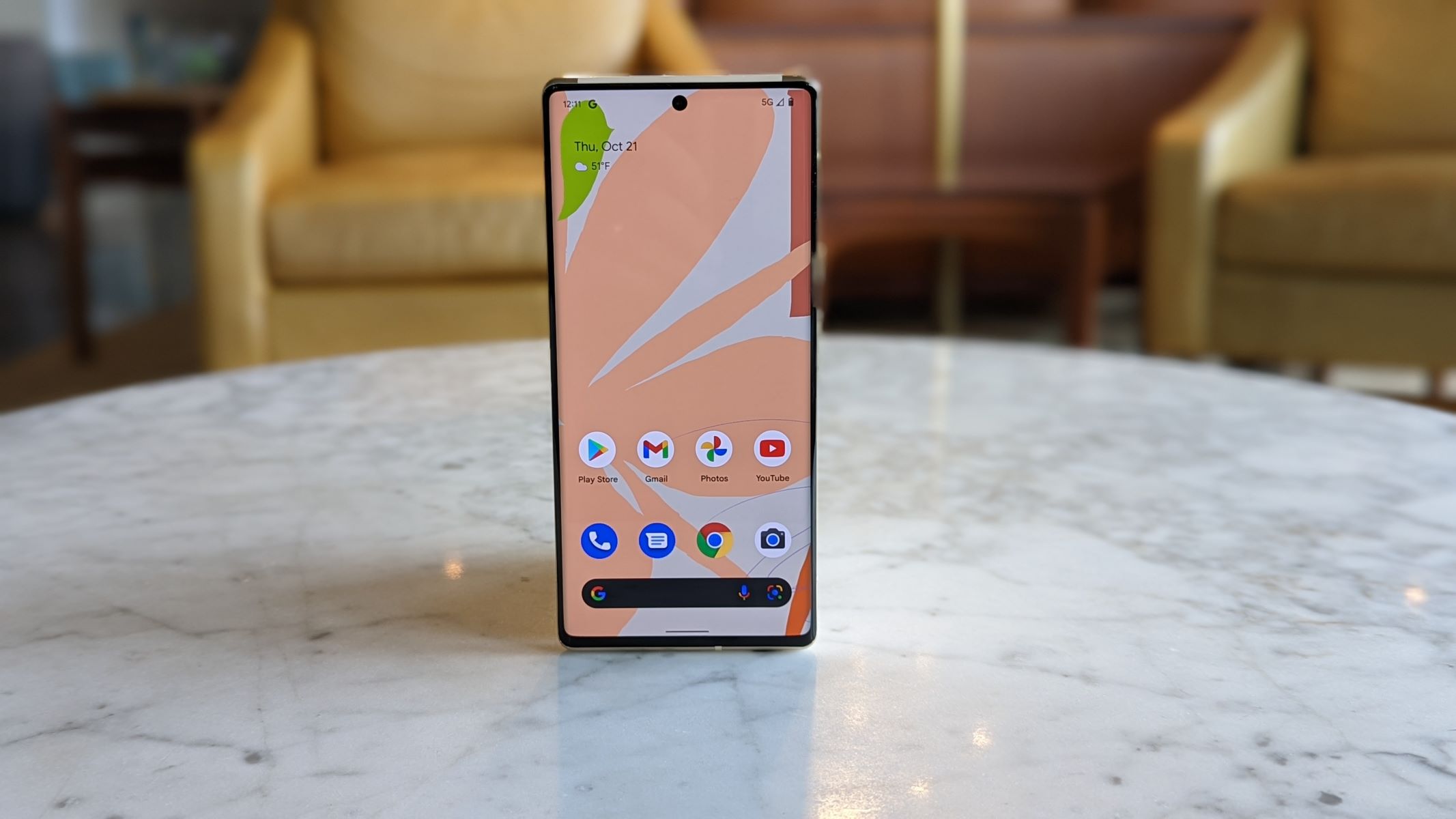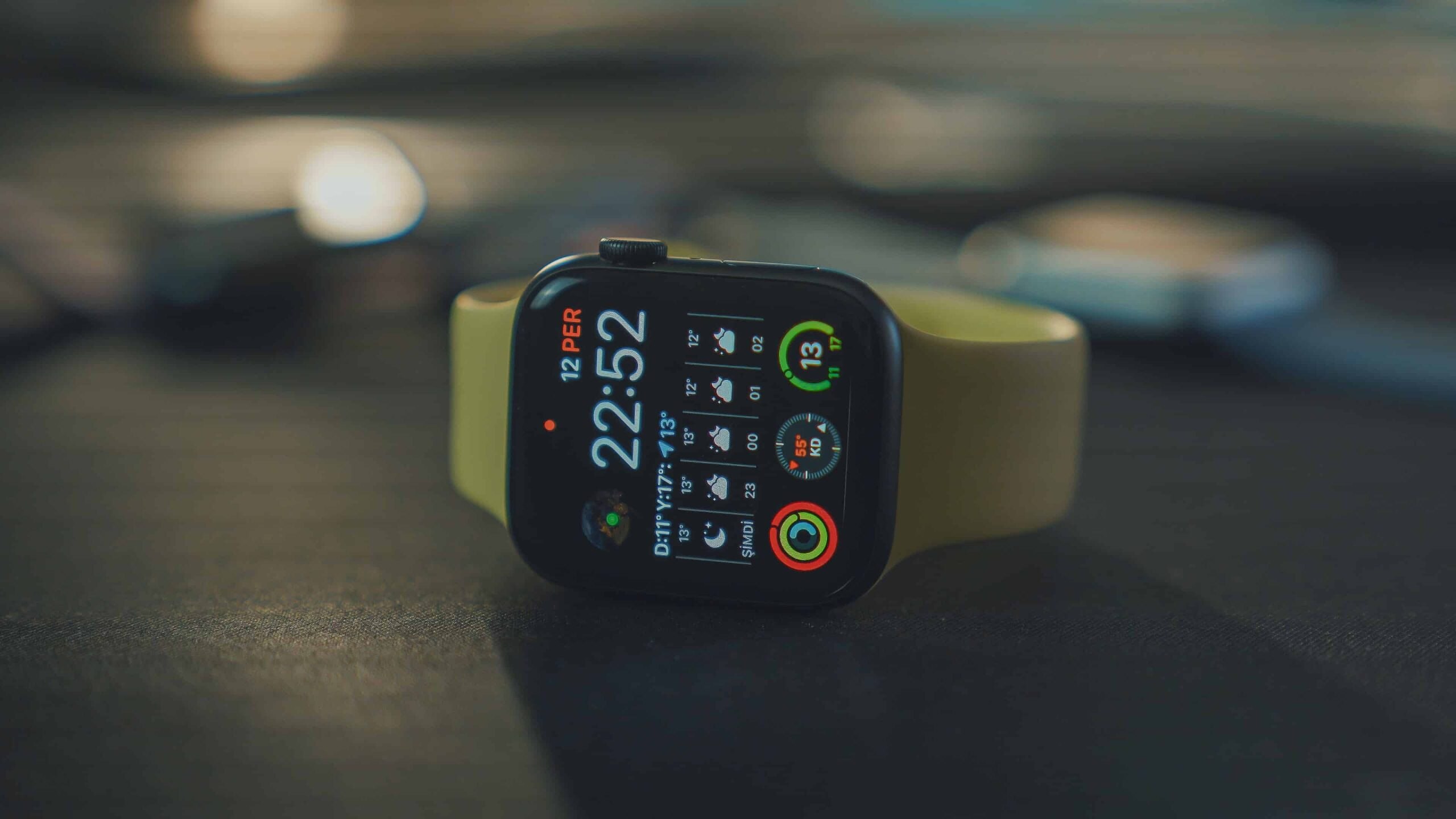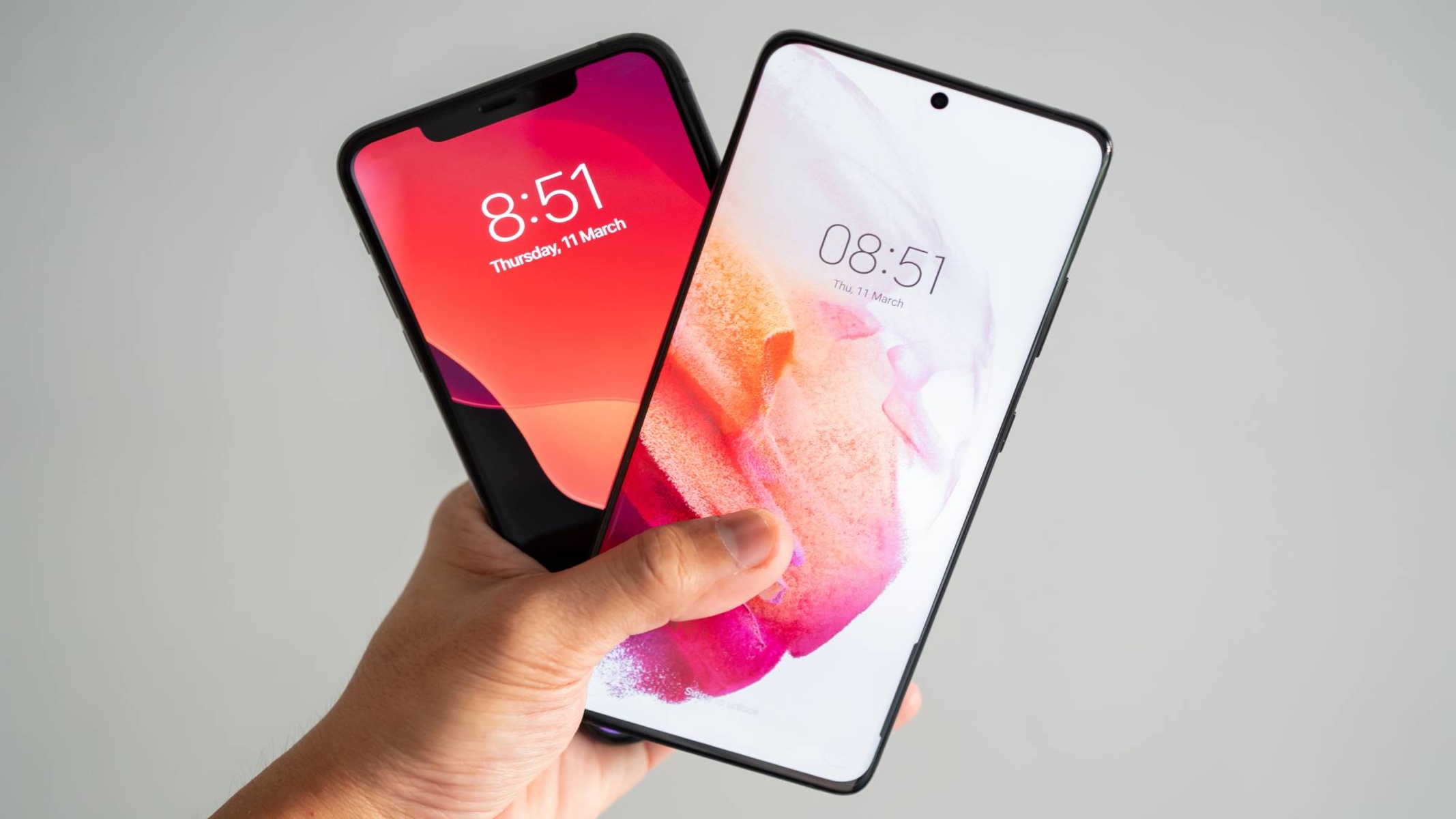Introduction
A smartphone is a ubiquitous gadget that has become an essential part of our daily lives. It has revolutionized the way we communicate and access information, fitting the power of a computer into the palm of our hand. With the rapid advancements in technology, smartphones have evolved into multifunctional devices that offer an array of features and capabilities. From making calls and sending messages to browsing the internet, taking photos, and even monitoring our health, smartphones have become indispensable tools.
Today, smartphones have become so integral to our lives that it’s hard to imagine a world without them. They have become our constant companion, providing us with instant access to a vast array of information, entertainment, and communication. Whether we are checking emails, updating social media, streaming videos, or playing games, smartphones have become an indispensable part of our daily routine.
The incredible power and versatility of smartphones come from the combination of various hardware and software components. Each component plays a vital role in delivering the impressive functionality that we have come to expect from these devices. In this article, we will explore the different parts that make up a smartphone, providing a comprehensive overview of their importance and functionality.
From the battery that powers the device to the display that showcases all the content, and from the processor that runs the operations to the camera that captures our memories, each component plays a crucial role in the overall functionality of a smartphone. By understanding the different parts and how they work together, we can appreciate the technological marvel that is a modern-day smartphone.
So, let’s dive into the fascinating world of smartphones and explore the various components that make them such extraordinary devices.
Battery
The battery is a fundamental component of a smartphone, providing the necessary power to keep it running throughout the day. Without a reliable and long-lasting battery, a smartphone would be rendered useless. The battery stores electrical energy and converts it into the power needed to operate the device.
Modern smartphones are equipped with lithium-ion or lithium-polymer batteries, which are known for their high energy density and longevity. These batteries can be charged and discharged numerous times without significantly degrading their capacity. This allows users to go through a full day of usage without the need for constant recharging.
The capacity of a smartphone battery is measured in milliampere-hours (mAh). The higher the mAh rating, the longer the battery will last before requiring a recharge. However, it’s important to note that battery life can be influenced by various factors such as display brightness, network connectivity, and running applications.
Manufacturers are continuously working on improving battery technology to enhance lifespan and charging speed. Some smartphones now come with fast charging capabilities, allowing users to charge their devices quickly, often reaching a significant percentage in just a few minutes.
In addition to the primary battery, smartphones may also have backup or secondary batteries, such as removable or swappable batteries. These types of batteries provide users the flexibility to replace them when they degrade over time or when extra power is needed while on the go.
To optimize battery life and efficiency, smartphones feature various software and hardware features. Power-saving modes and optimizations help reduce battery consumption by dimming the display, limiting app background activities, and adjusting performance based on usage. Moreover, advanced chips and power management systems ensure efficient power distribution to different smartphone components.
As smartphones continue to evolve, battery technology is expected to improve further. Researchers are exploring alternative materials and technologies, such as solid-state batteries and hydrogen fuel cells, to create more efficient and sustainable power solutions for future smartphones.
Display
The display is one of the most prominent and vital components of a smartphone. It is the interface through which users interact with the device, providing visual feedback for various tasks and activities. The quality of the display greatly impacts the overall user experience, from the clarity of text and images to the smoothness of scrolling and touch responsiveness.
Modern smartphones feature a variety of display technologies, with the most common being LCD (Liquid Crystal Display) and OLED (Organic Light-Emitting Diode) panels. LCD displays use a backlight and liquid crystal pixels to generate images, while OLED displays emit their own light, resulting in deeper blacks, vibrant colors, and improved contrast ratios.
Display sizes and resolutions vary across different smartphones, ranging from compact screens of around 4 inches to large displays exceeding 6.5 inches. Higher resolutions, such as Full HD (1920 x 1080) or QHD (2560 x 1440), offer sharper details and more immersive viewing experiences.
Another essential aspect of smartphone displays is the touch technology used. Capacitive touchscreens, which respond to the electrical properties of the human body, are the most common type found in smartphones. They provide smooth and accurate touch input, enabling gestures like tapping, swiping, pinching, and zooming.
Some smartphones also incorporate advanced features in their displays, such as high refresh rates. This means they can refresh the screen more times per second, resulting in smoother visuals, especially when scrolling or gaming. Refresh rates of 90Hz, 120Hz, or even 144Hz have become increasingly common in flagship smartphones.
Additionally, smartphone displays may come with features like HDR (High Dynamic Range) support, which enhances color accuracy and improves contrast for more realistic and vibrant visuals. Some displays also feature curved edges, offering a bezel-less and immersive viewing experience.
With the advent of foldable smartphones, the display technology has taken a leap forward. These devices feature flexible displays that can be folded or unfolded, allowing users to switch between a compact phone form factor and a larger tablet-like screen.
As technology advances, we can expect further innovations in smartphone display technology. Concepts like under-display cameras, where the front-facing camera is hidden underneath the screen, are being explored to achieve bezel-less designs.
Processor
The processor, also known as the central processing unit (CPU), is the brain of a smartphone. It is responsible for executing all the instructions and performing the calculations necessary to run the device’s software and applications smoothly.
Modern smartphones are powered by increasingly powerful processors that combine multiple cores for enhanced performance. Dual-core, quad-core, and octa-core processors are commonly found in smartphones. More cores allow for improved multitasking capabilities and faster processing of complex tasks.
Processors in smartphones are designed using ARM architecture, which is optimized for low power consumption without compromising performance. The clock speed, measured in gigahertz (GHz), determines how fast the processor can execute instructions. Higher clock speeds result in snappier performance.
The processor in a smartphone is not only responsible for running applications but also handles other critical tasks like graphics rendering and network connectivity. Graphics processing units (GPUs) integrated into the processor enhance the smartphone’s graphical capabilities, allowing for a seamless gaming and multimedia experience.
As smartphones continue to evolve, manufacturers are pushing the boundaries of processor performance. Advanced technologies like 5G connectivity, artificial intelligence, machine learning, and augmented reality place greater demands on processors. This has led to the development of specialized processors such as AI chips and neural processing units (NPUs) to handle these tasks more efficiently.
Manufacturers often work closely with chip makers, such as Qualcomm, MediaTek, and Apple’s in-house A-series chips, to develop custom processors tailored for their specific smartphone models. These processors are optimized for the device’s hardware and software, resulting in improved performance and power efficiency.
With each new generation of smartphones, we see significant improvements in processor performance. This enables faster app launches, smoother multitasking, and better overall user experience. The continuous advancements in processor technology contribute to the constant evolution of the smartphone industry.
Memory
Memory plays a crucial role in the performance and functionality of a smartphone. It is responsible for storing and providing quick access to various types of data, including the operating system, applications, user files, and temporary data.
Smartphones typically have two types of memory: RAM (Random Access Memory) and internal storage. RAM is the short-term or volatile memory that allows the device to run multiple apps simultaneously and ensures smooth multitasking. The more RAM a smartphone has, the better it can handle intensive tasks and switch between apps without lag or slowdown.
Internal storage, also known as flash memory, is where all the files and applications are stored for long-term use. It is non-volatile memory, meaning it retains data even when the device is powered off. Internal storage capacity can vary across smartphones, usually ranging from 16GB to 512GB or more. Some smartphones also offer expandable storage options via microSD cards for additional space.
In addition to RAM and internal storage, smartphones also utilize cache memory. Cache memory is a small but ultra-fast memory that stores frequently accessed data, such as app resources and web content, for quick retrieval. This helps improve the device’s overall performance by reducing data retrieval times.
Memory management is vital for optimal smartphone performance. Operating systems and software utilize efficient algorithms to allocate resources and manage memory usage. They prioritize active tasks, allocate RAM to running apps, and automatically remove unused or idle data from RAM to free up space.
The amount of RAM and internal storage in a smartphone determines its ability to handle demanding tasks, run resource-intensive apps, and store a large number of files and media. While more memory is generally desirable, it’s important to consider individual usage patterns and requirements.
As technology advances, manufacturers are constantly pushing the boundaries of memory capabilities. We are now seeing smartphones with 8GB, 12GB, or even 16GB of RAM, providing users with ample resources for demanding applications and multitasking.
Furthermore, newer storage technologies like UFS (Universal Flash Storage) offer faster read and write speeds, enhancing the responsiveness and efficiency of smartphones. These advancements in memory technology contribute to seamless user experiences and better overall performance.
Camera
The camera is one of the most important features of a smartphone, allowing users to capture and preserve precious moments. Over the years, smartphone cameras have undergone significant improvements, transforming them into powerful photography tools.
Smartphone cameras consist of multiple components, including lenses, image sensors, and image processing software. The lens captures light and focuses it onto the image sensor, which converts the light into a digital signal. The image processing software then enhances the captured images and applies various effects and filters.
Most smartphones now come equipped with dual, triple, or even quad-camera setups. Each camera serves a specific purpose, such as wide-angle, ultra-wide-angle, telephoto, or depth-sensing. This allows users to capture a wide range of subjects and scenes with different perspectives and levels of detail.
Megapixels (MP) are often used to measure the resolution of smartphone cameras. Higher megapixel counts generally result in sharper and more detailed images, especially when zooming in or cropping. However, the number of megapixels is not the only factor that determines image quality. Factors like sensor size, pixel size, aperture, and image processing algorithms also play crucial roles.
Smartphone cameras have also made significant advancements in low-light photography. Larger sensors and wider apertures allow more light to reach the sensor, resulting in brighter and clearer low-light images. Additionally, technologies such as Night Mode and multi-frame noise reduction algorithms further improve low-light performance.
Aside from photography, smartphone cameras have become capable of recording high-quality videos. Many smartphones now offer 4K and even 8K video recording, allowing users to capture stunning videos with incredible detail and clarity.
With the rise of social media and sharing platforms, smartphone cameras have taken on a new level of importance. Features like beautification modes, filters, and AI-enhanced image processing help users capture and share visually appealing photos and selfies effortlessly.
As smartphone manufacturers continue to innovate, we can expect even more exciting advancements in smartphone camera technology. Concepts like periscope lenses for high optical zoom, under-display camera technology, and improved computational photography techniques are all being explored to take smartphone photography to new heights.
Operating System
The operating system (OS) is the software that manages and controls the hardware and software resources of a smartphone. It provides an interface for users to interact with the device and runs applications, making it a vital component of the smartphone ecosystem.
There are two primary operating systems for smartphones: Android and iOS. Android, developed by Google, is an open-source platform that is used by a multitude of smartphone manufacturers. It offers a great deal of customization options and supports a wide range of devices. On the other hand, iOS, developed by Apple, is exclusive to Apple devices and provides a seamless and integrated user experience across their ecosystem.
The operating system is responsible for managing various functionalities of the smartphone, such as handling calls, managing memory, controlling power usage, and providing access to hardware features like the camera, sensors, and connectivity options.
Operating systems offer a variety of features and functionalities to enhance the user experience. They provide app markets or stores from which users can download and install applications, ensuring a vast library of software and services to choose from. Moreover, operating systems often include built-in apps and utilities for tasks like email, messaging, web browsing, and media playback.
Security is a crucial aspect of operating systems. Both Android and iOS employ different security measures to protect user data and prevent unauthorized access. These include app sandboxing, data encryption, secure boot processes, and regular security updates.
Upgrades and updates are essential for operating systems. They introduce new features, security patches, and bug fixes, improving the device’s overall performance and stability. They are typically released periodically and can be installed over-the-air directly on the device.
With the proliferation of smart devices, operating systems are becoming more interconnected. They often offer synchronization capabilities across multiple devices, allowing users to access their data seamlessly from smartphones, tablets, and computers.
Furthermore, operating systems enable integration with various online services and cloud platforms, providing a seamless experience for storing and syncing data, backing up files, and accessing content across multiple devices.
As the smartphone industry continues to evolve, operating systems play a critical role in shaping the user experience and providing a cohesive ecosystem. They drive innovation, offer new features, and ensure the smooth functioning of smartphones, making them an integral part of the overall smartphone experience.
Sensors
Sensors are an essential component of a smartphone, enabling it to perceive and interact with the physical world. These small electronic components detect and measure various environmental and physical phenomena, providing valuable data that enhances the functionality and user experience of the device.
Smartphones incorporate a wide range of sensors, each serving a specific purpose and providing crucial inputs for various applications and features. Common sensors found in smartphones include:
- Accelerometer: Measures the device’s acceleration and orientation, enabling features like screen rotation, motion-based gaming, and step tracking.
- Gyroscope: Detects the rotational movement and orientation of the device, enhancing gaming experiences and providing more accurate motion tracking.
- Magnetometer (Compass): Detects magnetic fields, enabling the device to determine its direction and provide accurate compass readings.
- Proximity Sensor: Detects the presence of nearby objects, allowing the device to turn off the screen during phone calls to prevent accidental touches and save power.
- Ambient Light Sensor: Measures the intensity of light in the environment, adjusting the screen brightness for optimal visibility and conserving battery life.
- Fingerprint Sensor: Enables secure biometric authentication, allowing users to unlock their smartphones and authorize transactions with their fingerprints.
- GPS (Global Positioning System): Uses satellite signals to determine the device’s location, providing accurate navigation, mapping, and location-based services.
- Barometer: Measures atmospheric pressure, enabling features like altitude tracking, weather forecasting, and elevation-based fitness tracking.
- Infrared Blaster: Allows the device to function as a remote control, transmitting infrared signals to control TVs, air conditioners, and other compatible appliances.
- Hall Sensor: Detects the presence of a magnetic field, commonly used to detect the closing and opening of a flip or slide phone cover.
These sensors work together, providing data that enables a wide range of features and functionalities in smartphones. Whether it’s fitness tracking, augmented reality applications, or advanced photography features like portrait mode and night mode, sensors play a crucial role in delivering these capabilities.
As technology advances, we can expect further innovation in sensor technology. Manufacturers are continuously exploring new types of sensors and improving the accuracy and capabilities of existing ones. This will pave the way for exciting new features and applications in future smartphones.
Connectivity
Connectivity is a crucial aspect of smartphones that enables users to stay connected to the world around them. Smartphones are equipped with various connectivity options that allow them to communicate and exchange data with other devices and networks.
One of the primary connectivity features in smartphones is cellular connectivity. With support for different mobile network standards like 4G LTE and the emerging 5G technology, smartphones can access the internet, make calls, send text messages, and use various online services wherever there is cellular coverage.
Wi-Fi connectivity is another essential feature found in smartphones. It enables users to connect to wireless networks, such as home or public Wi-Fi hotspots, for faster internet access and data transfers. Wi-Fi connectivity also allows for features like Wi-Fi calling and seamless transition between cellular and Wi-Fi networks for better coverage and quality.
Bluetooth is a short-range wireless technology commonly found in smartphones. It allows for low-power, secure, and wireless communication between smartphones and other compatible devices, such as headphones, speakers, smartwatches, and fitness trackers. Bluetooth enables features like wireless audio streaming, file transfers, and device pairing.
Near Field Communication (NFC) is another connectivity feature present in smartphones. It enables secure short-range communication between devices when brought close together. NFC is used for various applications, including contactless payments, ticketing, pairing with other devices, and transferring small amounts of data.
Smartphones also come equipped with GPS (Global Positioning System) for location-based services. GPS allows smartphones to determine their precise location, enabling navigation, mapping, and location-specific applications like ride-hailing services, restaurant recommendations, and fitness tracking.
USB (Universal Serial Bus) connectivity is essential for connecting smartphones to other devices like desktop computers, laptops, and charging adapters. USB ports, including USB-C and micro-USB, allow for data transfers, charging, and connecting peripherals like keyboards and storage devices.
With advancements in wireless charging technology, many smartphones now support wireless charging capabilities. This allows users to charge their devices by simply placing them on a compatible charging pad or stand, eliminating the need for cables.
In recent years, smartphones have seen the integration of eSIM (embedded SIM) technology. eSIMs are a virtual form of the traditional SIM card, which enables users to switch between carriers and activate their devices without physical SIM cards. eSIM provides greater flexibility and convenience for users.
As technology evolves, smartphones continue to gain more connectivity options. Features like 5G connectivity, improved Bluetooth standards, enhanced Wi-Fi capabilities, and broader IoT (Internet of Things) integration will further expand the connectivity possibilities of smartphones.
Speakers
Speakers are an essential component of smartphones that enable audio playback and enhance the overall multimedia experience. They produce sound output, allowing users to listen to music, watch videos, play games, and make phone calls.
Smartphones typically feature two types of speakers: earpiece speakers and external speakers. The earpiece speaker is located at the top of the device and provides sound output for phone calls, video calls, and other in-call audio. External speakers, on the other hand, are usually located at the bottom or on the back of the device and are responsible for delivering audio during media playback.
With advancements in technology, smartphone speakers are becoming more powerful and capable of producing high-quality sound. They are equipped with amplifiers and digital signal processors (DSPs) that enhance audio output, providing clearer and more immersive sound experiences.
Stereo speakers are increasingly being incorporated into smartphones, offering a more immersive audio experience. With stereo speakers, sound is spread out and gives the impression of a wider sound stage, creating a more enjoyable listening experience for music, videos, and games.
Some smartphones also offer features like Dolby Atmos or other audio enhancements, which further enhance the audio quality and create a more immersive sound environment. These technologies simulate surround sound, providing a more cinematic audio experience when using headphones or high-quality external speakers.
Smartphone speakers are not just limited to audio playback. They also play a role in providing haptic feedback through vibrations or “haptic touch”. This feature adds tactility to on-screen interactions, creating a more responsive and engaging user experience. For example, when typing on a virtual keyboard, the speakers can provide subtle vibrations to simulate the feeling of pressing physical keys.
As smartphones continue to evolve, manufacturers are constantly working on improving the sound quality and output of smartphone speakers. They experiment with new designs, materials, and technologies to deliver louder, clearer, and richer audio experiences for users.
In addition to built-in speakers, smartphones also support various audio output options. They typically have a 3.5mm headphone jack, allowing users to connect traditional wired headphones or earphones. Furthermore, smartphones support Bluetooth connectivity, enabling users to connect wireless headphones, earbuds, or speakers for a more convenient and wire-free audio experience.
With the increasing popularity of streaming services and the demand for high-quality audio, smartphone speakers continue to play a significant role in providing immersive and enjoyable multimedia experiences on the go.
Buttons and Ports
Buttons and ports are physical components of a smartphone that allow users to interact with the device and connect to external peripherals. They provide convenient access to various functions and enable connectivity with other devices.
One of the primary buttons found on smartphones is the power button or the sleep/wake button. This button is used to turn the device on or off and can also be used to lock/unlock the screen or put the device into sleep mode.
Another common button is the volume rocker, which consists of two or more buttons typically located on the side of the device. The volume rocker allows users to adjust the volume level of media playback, notifications, and phone calls.
Many smartphones also feature a dedicated button for taking photos called the shutter button or camera button. This button allows users to quickly capture photos and can often be customized to launch the camera app directly.
On the front of the device, smartphones usually have a home button or a home gesture area. This button or area acts as a navigation control, allowing users to return to the home screen or switch between recent apps.
In addition to buttons, smartphones have various ports that enable connectivity and data transfer. The most common port is the charging port, which is used to connect the device to a power source for charging the battery. USB-C and micro-USB are the two main types of charging ports used in smartphones.
Smartphones also come equipped with a 3.5mm headphone jack, allowing users to connect wired headphones or earphones for audio playback. However, some manufacturers have started omitting the headphone jack in favor of wireless audio solutions or the use of USB-C for audio output.
Smartphones often feature a SIM card tray, which allows users to insert a SIM card to establish a connection with a cellular network. Some devices also support dual SIM functionality, enabling users to use two SIM cards simultaneously.
On the back of the device, smartphones may have a fingerprint sensor for secure biometric authentication. The fingerprint sensor allows users to unlock their device and authorize transactions using their fingerprint.
Some smartphones incorporate additional buttons or switches for specific functions, such as a dedicated voice assistant button or a switch for toggling silent mode.
Overall, buttons and ports provide users with the necessary physical interfaces to control and connect their smartphones. These components allow for seamless navigation, convenient charging, audio connectivity, and various other functions that enhance the usability and versatility of smartphones.
SIM Card Tray
The SIM card tray is a vital component of smartphones that allows users to connect to a cellular network and access telecommunication services. SIM cards, short for Subscriber Identity Module, store information that identifies the user and grants access to the network.
The SIM card tray is usually located on the side of the smartphone or, in some cases, on the top or bottom. It provides a designated slot for inserting the SIM card securely into the device. The tray is designed to hold the SIM card firmly in place, ensuring a reliable connection with the network.
There are different types of SIM card trays depending on the size of the SIM card being used. The three main sizes of SIM cards are standard SIM, micro SIM, and nano SIM. The SIM card tray accommodates these different sizes by incorporating a removable component or an adapter that can adjust to fit the specific size of the SIM card.
Inserting a SIM card into the tray is a straightforward process. Users can use a SIM card removal tool or a small pin to eject the tray and then place the SIM card in the designated slot. Once the SIM card is inserted, the tray can be reinserted into the smartphone.
The SIM card contains important information such as the mobile network operator, user account details, and authentication keys. When the smartphone is turned on, it communicates with the network, establishes a connection, and enables the user to make calls, send messages, and access mobile data services.
Many smartphones support dual SIM functionality, meaning they can hold two SIM cards simultaneously. This feature allows users to have two phone numbers or use multiple networks on the same device. Dual SIM functionality is particularly useful for people who frequently travel between different regions or countries, allowing them to use local SIM cards while retaining their home network.
It is important to note that the SIM card tray should be handled with care to avoid any damage. Excessive force or incorrect insertion of the SIM card can lead to tray misalignment or damage to the SIM card or the device itself.
The SIM card tray is an essential component that enables seamless connectivity and integration with the cellular network. Through the SIM card, users can access telecommunication services and stay connected while using their smartphones.
Microphone
The microphone is a critical component of a smartphone that enables audio input and voice communication. It captures sound waves and converts them into electrical signals that can be processed and transmitted by the device.
Smartphone microphones are typically small and strategically placed in specific locations to capture sound effectively. The main microphone used for voice calls and recording audio is usually located at the bottom of the device near the charging port or on the top near the front-facing camera. Some smartphones also have additional microphones for noise cancellation and stereo audio recording.
The microphone is essential for making phone calls, allowing users to transmit their voices to the person on the other end of the call. It ensures clear and reliable voice communication, even in noisy environments.
In addition to voice calls, the microphone is used for various other functionalities on smartphones. When recording videos, the microphone captures the audio accompanying the footage, ensuring that the sound is synchronized with the visuals.
Voice assistants, such as Siri, Google Assistant, or Alexa, rely on microphones to listen for voice commands and answer queries. The microphone captures the user’s voice and sends it to the voice assistant for processing and response.
Smartphone applications, such as voice-to-text and speech recognition, utilize the microphone to convert spoken words into written text. This functionality allows users to dictate messages, notes, or search queries.
Microphones in smartphones are continuously evolving to deliver better voice quality and enhanced noise cancellation capabilities. Noise cancellation technology helps reduce background noise during voice calls, providing clearer audio for both the caller and the recipient.
Using multiple microphones, smartphones can implement beamforming techniques to improve voice pickup and noise reduction. With beamforming, the device can focus on capturing sound from specific directions and suppress unwanted noise. This technology improves the overall voice quality and intelligibility during calls, even in crowded or noisy environments.
It is important to note that users should be mindful of the microphone’s positioning and avoid obstructing it while using the smartphone. Covering or blocking the microphone can result in muffled or distorted audio during calls or recordings.
Microphones play a crucial role in facilitating voice communication, audio recording, and voice-based functionalities on smartphones. Their continuous improvement allows for better voice quality and enhanced user experiences in various scenarios.
Vibrator
The vibrator is a small but essential component of a smartphone that provides haptic feedback to users. It produces vibrations that can be felt when certain events or actions occur on the device, enhancing the user experience and providing tactile feedback.
The vibrator is primarily used for several functions on smartphones. One of its primary purposes is to provide notification alerts. When a message, email, or a notification from an application is received, the vibrator is activated to alert the user discreetly. This allows users to be aware of incoming notifications even when the device is in silent mode or when they are unable to see the screen.
The vibrator is also utilized in various gaming applications, where it can provide tactile feedback during gameplay. Vibrations can enhance immersion by simulating in-game effects such as explosions, impacts, or vibrations associated with movement or actions within the game.
In addition to these functions, the vibrator can be used as an alert feature for alarms, timers, and reminders. When these events are triggered, the vibrator can provide a subtle vibration, ensuring that the user doesn’t miss important time-based events or tasks.
The intensity and duration of vibrations can vary depending on the configuration and settings of the device. Users can typically customize the vibration intensity or choose from different vibration patterns provided by the operating system or third-party applications.
Smartphone manufacturers often strive to enhance the vibrational experience by incorporating advanced vibration motors. These motors are designed to provide more precise and desirable vibrations, creating a more immersive and realistic tactile experience.
Vibration motors in modern smartphones are engineered to be efficient and silent in operation. This ensures that the vibrations are discreet and don’t produce unnecessary noise or disturb the user or people around them.
It is worth noting that the vibrator feature can be disabled or adjusted in the device’s settings to meet individual preferences or conserve battery life. This allows users to customize their experience with the vibration feature to suit their needs.
The vibrator is a small yet impactful component of a smartphone. By providing tactile feedback and alerts, it enhances the user experience, ensures timely notifications, and adds immersion to gaming and other interactive applications.
Antenna
The antenna is a crucial component of a smartphone that enables wireless communication by transmitting and receiving radio frequency signals. It facilitates connectivity with cellular networks, Wi-Fi routers, Bluetooth devices, and other wireless technologies.
Smartphones utilize different types of antennas to support various wireless technologies. The main antenna is typically located inside the device, hidden behind the phone’s casing. This antenna is designed to transmit and receive signals for cellular connectivity, allowing users to make calls, send messages, and access mobile data.
Cellular antennas, such as those for 4G LTE or 5G connectivity, are essential for maintaining a strong and reliable connection to the cellular network. They are designed to pick up radio frequency signals from cell towers and transmit data and voice signals to and from the network.
Smartphones also incorporate Wi-Fi antennas to connect to wireless local area networks (WLANs). Wi-Fi antennas enable users to access the internet and connect with other devices without using cellular data. Wi-Fi connectivity provides faster data transfer speeds and can be particularly beneficial when downloading or streaming large files or multimedia content.
Bluetooth antennas allow smartphones to connect to other Bluetooth-enabled devices, such as headphones, speakers, or smartwatches. Bluetooth antennas facilitate wireless audio streaming, file transfers, and device pairing.
GPS antennas are another important component found in smartphones. They receive signals from global positioning satellites to determine the device’s location accurately. GPS antennas enable navigation, location-based services, and geotagging of photos and videos.
The design and placement of antennas in smartphones play a crucial role in ensuring optimal signal reception and transmission. Manufacturers carefully engineer the internal layout of the device to minimize interference and maximize signal strength.
Signal attenuation can occur due to factors like physical obstructions, distance from the signal source, or interference from other electronic devices. Manufacturers employ various techniques to mitigate these issues and optimize antenna performance, such as using advanced antenna tuning systems, antenna diversity, and signal amplification technology.
It’s important to note that external factors, including geographical location, network congestion, and environmental conditions, can also affect signal strength and reception. In areas with weak signal coverage, the smartphone’s ability to establish and maintain a connection may be impacted.
As wireless technologies continue to evolve, smartphone antennas are expected to improve further to support advancements in cellular connectivity, Wi-Fi standards, and other emerging wireless technologies.
The antenna is a crucial component of a smartphone’s wireless connectivity system. It enables seamless communication, ensuring that users can stay connected to cellular networks, Wi-Fi, Bluetooth devices, and GPS, making it possible to enjoy the full range of features and services offered by smartphones.
GPS
GPS, which stands for Global Positioning System, is a satellite-based navigation system that provides precise location information to smartphones and other devices. It enables accurate positioning, navigation, and tracking capabilities, enhancing the functionality of smartphones in various contexts.
Smartphones utilize GPS technology to determine their exact geographical location. They receive signals from a network of GPS satellites orbiting the Earth and use trilateration methods to calculate the device’s position based on the time it takes for the signals to reach the receiver.
GPS functionality in smartphones offers a plethora of benefits. Navigation applications make use of GPS technology to provide turn-by-turn directions, real-time traffic updates, and alternative routes, enabling users to navigate unfamiliar areas and reach their destinations efficiently.
GPS also enhances location-based services and applications on smartphones. Services like ride-hailing apps, restaurant recommendations, local weather updates, and geotagging of photos and social media posts rely on GPS for accurate location information.
Smartphones equipped with GPS capabilities offer valuable outdoor and fitness-related features. They can track and record activities such as running, walking, cycling, and hiking, providing useful data like distance, speed, elevation, and route history.
Emergency services benefit from GPS technology in smartphones as well. When a user places an emergency call, the device’s GPS can provide the caller’s precise location, assisting in swift response and assistance.
It is important to note that GPS performance can be influenced by factors like geographical location, line-of-sight visibility to the satellites, and interference from structures or dense vegetation. In urban areas with tall buildings or in remote areas with limited satellite visibility, GPS accuracy may be compromised.
As technology advances, smartphone manufacturers are integrating additional positioning systems alongside GPS. This includes GLONASS, Galileo, and BeiDou, which are satellite navigation systems maintained by other countries and organizations. These systems enhance accuracy, improve positioning in challenging environments, and expand global coverage.
The impact of GPS technology on everyday life is profound, and smartphones play a key role in making it more accessible to users worldwide. They have transformed navigation, location-based services, outdoor activities, and emergency response, empowering individuals with precise location information at their fingertips.
Headphone Jack
The headphone jack is a physical port on smartphones that allows users to connect wired headphones or earphones for audio playback. It provides a universal way to enjoy high-quality audio and is a convenient feature for users who prefer using traditional wired headphones.
The standard 3.5mm headphone jack has been a common feature on smartphones for many years. It is compatible with a wide range of headphones, earphones, and other audio accessories that utilize a standard audio plug.
One of the significant advantages of the headphone jack is its versatility. It allows users to connect different types of headphones, including in-ear, on-ear, and over-ear headphones, without the need for adapters or specific connectors.
Using the headphone jack also allows users to enjoy audio playback without relying on wireless connectivity or consuming battery power. This can be particularly useful in situations where Bluetooth connectivity is limited, or the device’s battery is running low.
The headphone jack ensures compatibility with a variety of audio sources, including music players, laptops, and other devices that support a standard audio output. Users can plug their headphones into different devices without the need for extra adapters or cables.
Many users appreciate the audio quality provided by wired headphones, as they can deliver reliable and high-fidelity sound reproduction. The direct wired connection eliminates potential audio quality degradation that may occur with wireless transmission technologies.
While some smartphones have started omitting the headphone jack in favor of wireless audio solutions or USB-C for audio output, the headphone jack remains a desirable feature for many individuals. It allows them to continue using their preferred wired headphones without the need for additional adapters or purchasing wireless alternatives.
However, the removal of the headphone jack has led to the rise of wireless audio solutions like Bluetooth headphones and earphones. Wireless audio provides more freedom of movement, eliminates cable tangling, and allows for convenient hands-free use.
Adapters or dongles are available for smartphones that no longer have a built-in headphone jack, allowing users to connect wired headphones through alternative ports, such as the USB-C or Lightning port.
It’s important to note that advancements in wireless audio technology have made significant improvements in audio quality and latency, providing users with a seamless and high-quality wireless audio experience. This has contributed to the growing acceptance and adoption of wireless audio solutions.
The future of the headphone jack in smartphones remains uncertain, as manufacturers continue to explore innovative audio solutions and design choices. Regardless, the headphone jack remains a popular and appreciated feature amongst users who value the convenience, versatility, and audio fidelity provided by wired headphones.
Build Materials
The build materials of a smartphone refer to the materials used in its construction, determining its physical durability, aesthetics, and overall feel. Manufacturers carefully select these materials to create a device that is sturdy, lightweight, and visually appealing.
One of the most commonly used materials for smartphone construction is plastic. Plastic is lightweight, affordable, and allows for flexibility in design. However, it may not provide the same premium feel as other materials, and it is generally considered to be less resistant to damage.
Metal, such as aluminum or stainless steel, is a popular choice for smartphone construction. It offers a premium look and feel, improved durability, and better heat dissipation. Metal construction can provide a more rigid and sturdy device, reducing the chance of damage from drops or impacts.
Glass is another material frequently used in smartphone construction, especially for the front and back panels. Glass offers a sleek and modern aesthetic, and it allows for wireless charging capabilities. However, glass is more prone to scratches, smudges, and cracks, so manufacturers often use additional layers of protection, such as reinforced or tempered glass.
Ceramic is a premium material that is gaining popularity in high-end smartphones. It offers a luxurious feel, exceptional durability, and resistance to scratches and damage. Ceramic smartphones are known for their premium finish and unique design aesthetic.
Some smartphones explore a combination of different materials to achieve a balance between aesthetics, durability, and functionality. For example, a device may feature a metal frame combined with a glass or ceramic back panel. This allows for wireless charging while maintaining overall device strength.
Manufacturers also consider factors such as antenna reception and signal transmission when selecting build materials. Certain materials can interfere with wireless signals, prompting the need for additional design considerations like antenna bands or unique arrangement of internal components.
Water and dust resistance have become common features in smartphones, thanks to the use of specialized build materials and sealing techniques. By incorporating water and dust-resistant materials, like special coatings or gaskets, manufacturers can provide increased durability and protection against accidental water splashes or dust ingress.
Design choices for build materials can vary across different smartphone models and manufacturers. The choice of materials depends on factors like price range, target market, desired aesthetics, and priorities such as durability or premium design.
As technology advances, manufacturers continue to innovate in terms of build materials. They explore new materials, such as carbon fiber or advanced composites, to create devices that are even more durable, lightweight, and aesthetically pleasing.
The selection of build materials plays a significant role in the overall quality, durability, and user experience of a smartphone. It influences the device’s physical characteristics, weight, aesthetics, and resistance to wear and tear, contributing to the overall satisfaction and longevity of the device.







